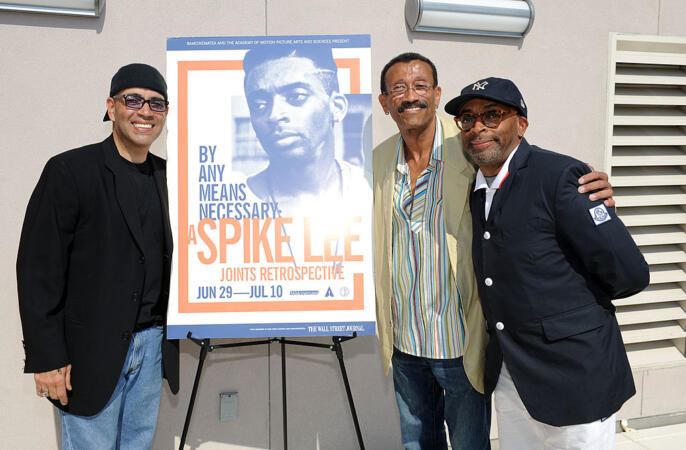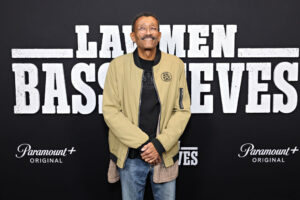Wynn Thomas is one of Hollywood’s most profound production designers. His love for art, which started early on, has led him to create magic for films such as Spike Lee’s She’s Gotta Have It, Tim Burton’s Mars Attacks! and a plethora of others.

Today, that love continues with his most recent work for Paramount+’s Taylor Sheridan series, Lawmen: Bass Reeves, starring David Oyelowo.
“For me, my interest in storytelling, really, because that’s what my primary interest is, started when I was a teenager,” Thomas told Blavity’s Shadow and Act. “I grew up in Philadelphia, and I fell in love with the theater as a teenager and actually started working at a local theater in Philadelphia at the age of 14 or 15.”
Thomas’ love for creating deepened throughout high school. He ultimately majored in art in college, where he had the chance to discover that he could make a life out of his affection for drawing and painting.
“When I decided to go to college, I wanted to combine my love of theater and my love of art and, as a result of that — trying to combine those two loves — I decided to become a set designer in theater, and that’s what I went to college for. … It’s been an amazing journey,” Thomas said. “I have had a life in which I’ve done nothing but work in the arts. I mean, it’s crazy, I’m 70 now and I’ve been working in the arts my entire life.”
What’s more, Thomas disclosed that the research has become his favorite part of the process, especially for a series like Bass Reeves.

“Research is really a profound sense of the process because research does one or two things. It either confirms what you have in your head or it will inspire you,” Thomas said. “And that’s what happens quite a bit on this job, and particularly on this job, because I was entering a world that I knew nothing about. The 1860s, 1870s Indian Territory … I knew nothing about that world.”
He continued, “I spent a tremendous amount of time doing a great deal of research into how people lived and looking into the details of the Native American communities because we were servicing that community in this story. So that is the fun part of the job. Surrounding myself with all these great images, from photographs to paintings to fabrics, and then the next part of the process is for me to take that inspiration, to take those resources and figure out a way to turn them into set designs for the project.”
Thomas said that his approach to the craft is old-school, despite there being technological advancements in place to make the job easier.
“I’m still doing things the old-fashioned way,” Thomas said. “I literally sit down with pencils and an empty page and I start to draw. The industry has changed because we are now using different tools to decide how to develop the work.”
No matter how many years and projects he has under his belt, the Philadelphia native says his approach to the process is still fundamentally the same as when he first started.
“You read the script, do your research, sit down and start to draw. I still do all of my drawings by pencil,” Thomas shared. “As we all know, technology has had a great impact on the business, and as a result, I’m now working with a generation of artists who are using the computer to articulate their work — which means the actual design process hasn’t changed, but how you communicate that process to the work has changed.”
“Now, when you’re working on a computer and you’re designing something on the computer, what we have to be careful of is that when you’re using a computer, the lines that you’re using to draw are always straight and they’re always very clear,” he added. “This means that sometimes if you’re not careful when you’re sitting down to articulate what the set is going to be, it doesn’t have the emotional feeling that you would want to have if you were using a pencil, so that’s one of the challenges because the computer will make everything the same. It neutralizes everything.”
Thomas, an expert in this space, said he feels a responsibility to develop the next generation of production designers.
“The important thing for me has been working with essentially the next generation of production designers and art directors and artists,” he said. “I hope that the development of this new talent will be the lasting part of my legacy because I will be leaving a generation of talented people behind me. I have a certain amount of knowledge and experience in my head, and what my goal has always been is to share it with the up-and-coming generation.”
